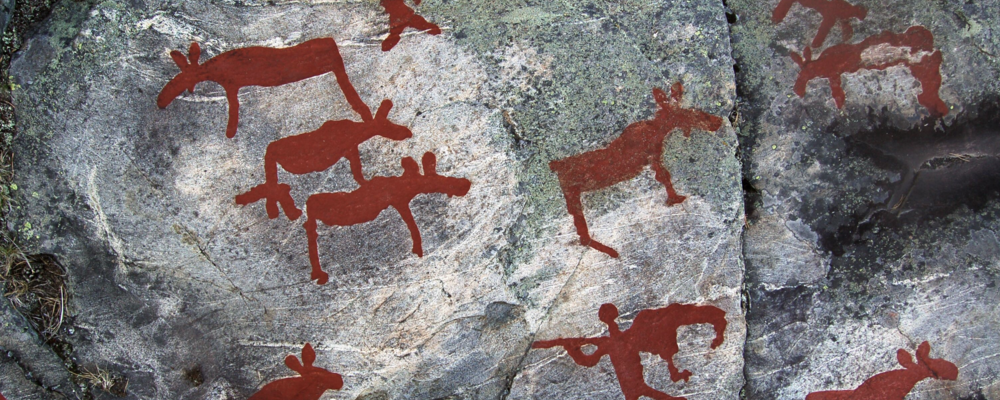The Swedish Rock Art Research Archives (SHFA) and the Gothenburg Research Infrastructure in Digital Humanities (GRIDH) at the University of Gothenburg have jointly developed the new database.
“SHFA has a unique and fantastic database. Now we have a tool that makes it possible to search the archive with new modern technology”, says Siska Humlesjö.
Look up rock carvings directly on site
Rock carvings can be found in thousands of sites in Sweden and are approximately 3000 years old. They represent ships, animals, people, weapons and more, that reflect the lives, ideals and experiences of the Bronze Age people. Documentation of rock carvings has been going on since 1627, and since 2007 the SHFA has gathered documentation in a database which has to this date had over two million visitors from all over the world. The inventory of documentation about rock carvings that has been collected in various museums, with researchers and in private and public archives has resulted in material from nearly one hundred national and international museums and archives with hundreds of thousands of documents in the form of images on paper and plastic, casts, photos, maps and text descriptions.
Most of the rock carvings are from Sweden, but in the future rock carvings from other countries will also be included.
“The Scandinavian rock carvings are world-renowned and the new database makes it easier for researchers as well as the public to access the material. The interface we have built is responsive, which means you can look up rock carvings while standing in front of them in nature”, says Siska Humlesjö.
The fact that the interface is responsive means that it works on any screen and also on mobile phones. There are many completely new functions here – high-resolution images that can be downloaded and printed, the ability to search via map, as well as an advanced search function with various filters such as keywords, location and the type of images requested.
The SHFA’s director Johan Ling hopes that more people will discover the material.
“It is a prehistoric picture treasure, but it’s been difficult both for researchers as well as the public to access the material because the documentations of the carvings were often done in inaccessible formats and on sensitive materials that were stored in a number of different museums in Sweden”, he says.
Everything in the database is linked to Fornsök, The Swedish National Heritage Board’s search service for all known registered ancient remains in Sweden, where you can find more information about the ancient remains and see how excavations have been carried out and more.
The database is currently being tested by users and will be developed further in the autumn, including with 3D models of rock carvings. Suggestions for functionality can be sent to the developers at gridh@gu.se.
Explore the database
By: Katarina Wignell
Images: SHFA

